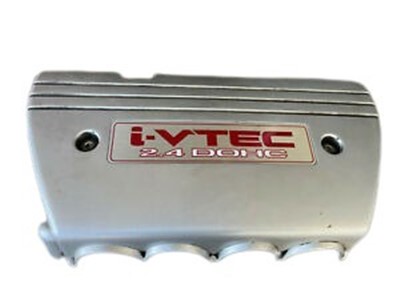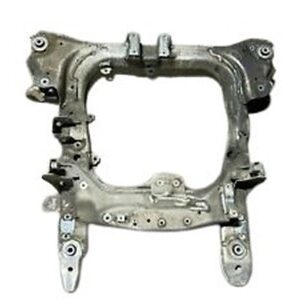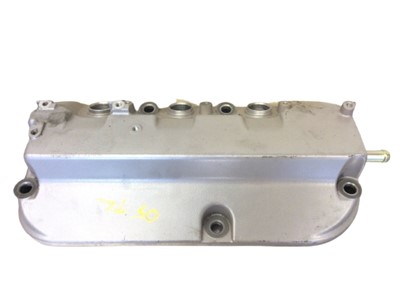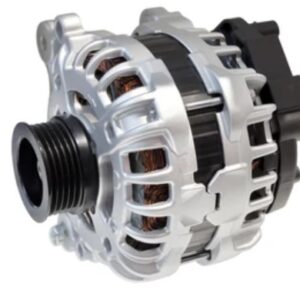Engine Cover
In many modern four-stroke engines, the cylinder head cover houses the upper actuation elements of the engine control unit as well as the valves in the crankcase ventilation with all its peripheral devices. Additionally, it protects the engine from dirt or other foreign objects
*WE HAVE ALL COLOURS AND VARIANTS IN ALL BRANDS*
*TERMS AND CONDITION APPLY*
$120.00
CompareEngine Cover
An engine cover, also known as a motor cover or engine bay cover, is a protective panel located over the top of a vehicle’s engine. It serves multiple functions, from improving aesthetics to enhancing the overall performance of the vehicle. Engine covers are commonly found in modern cars, especially those with exposed engine compartments. They are typically made of materials such as plastic, fiberglass, or carbon fiber, depending on the vehicle’s make, model, and intended use.
Material and Construction
Engine covers are designed with durability and functionality in mind. Common materials used in their construction include:
- Plastic (Polypropylene): Most standards are made from high-quality plastic, which is lightweight, cost-effective, and durable. Plastic covers are resistant to heat and corrosion, making them ideal for daily use in a wide range of driving conditions.
- Fiberglass: For enhanced heat resistance and strength, some are made from fiberglass. This material is more durable than plastic and provides better thermal insulation. Fiberglass engine covers are commonly used in high-performance vehicles.
- Carbon Fiber: High-end sports cars and performance vehicles often use carbon fiber engine covers. Carbon fiber is extremely lightweight and offers excellent strength and heat resistance. It provides a sleek, high-tech appearance and contributes to the vehicle’s overall weight reduction.
- Aluminum or Metal Alloy: In some cases, may be constructed from aluminum or other lightweight metal alloys. These materials offer superior heat dissipation properties and add a touch of luxury to the engine bay. They are typically found in luxury or custom vehicles.
Design and Functionality
Engine covers come in a variety of designs and styles, often tailored to the specific engine layout and the vehicle’s aesthetic. Key features and design aspects include:
- Aesthetic Appeal: One of the primary purposes of an is to improve the appearance of the engine bay. Covers provide a clean, organized look, concealing the various mechanical components and wiring. This is especially important in luxury and performance vehicles, where presentation is a key selling point.
- Noise Reduction: helps reduce engine noise by dampening sound vibrations. The cover acts as an insulating barrier, absorbing sound waves generated by the engine’s moving parts. This contributes to a quieter, more comfortable driving experience.
- Heat Management: can help manage engine heat by channeling airflow and providing a barrier against direct heat exposure. Some covers are designed with heat-resistant materials and may include heat shields or insulation to protect against high temperatures.
- Protection: Covers protect the engine components from dust, dirt, and debris, which can accumulate in the engine bay. This protection is essential for maintaining the engine’s cleanliness and preventing potential damage caused by foreign particles.
- Brand Identity and Customization: Many feature branding elements such as logos, model names, or performance insignias. These design elements add a personalized touch and highlight the vehicle’s brand identity. Car enthusiasts may also opt for custom engine covers with unique designs, colors, or finishes to match their style.
Types of Engine Covers
vary based on their design, material, and the specific needs of the vehicle. Common types include:
- Standard Plastic Engine Covers: Found in most modern vehicles, these covers provide basic protection and noise reduction. They are cost-effective and practical, offering a clean appearance for the engine bay.
- Performance Engine Covers: Typically made from carbon fiber or fiberglass, these covers are designed for high-performance vehicles. They offer improved heat resistance and may feature aerodynamic designs to enhance airflow within the engine bay.
- Custom Engine Covers: Car enthusiasts and custom car builders often use bespoke to personalize their vehicles. These covers can be tailored to fit specific engine configurations and may include unique designs, colors, and materials.
- Insulated Engine Covers: Some are designed with additional insulation to provide enhanced heat protection. These covers are particularly useful in high-temperature environments or in vehicles that require strict thermal management.
Installation and Maintenance
Engine covers are designed for easy installation and removal, making maintenance tasks more convenient. Here are some tips for installation and care:
- Installation: Most are installed using simple mounting points, clips, or screws. They are designed to fit securely over the engine without interfering with other components. Always follow the manufacturer’s guidelines when installing or replacing an engine cover.
- Cleaning: Regular cleaning of the is important to maintain its appearance and functionality. Use a mild detergent and water to remove dirt and grime. Avoid using harsh chemicals or abrasive cleaners that could damage the cover’s surface.
- Inspection: Periodically inspect them for signs of wear, cracks, or damage. Replace the cover if it shows significant wear or if it no longer fits securely. A damaged cover may not provide adequate protection or noise reduction.
- Customization: If customizing, ensure that any modifications do not compromise the cover’s ability to protect and insulate the engine. Always use materials and finishes that can withstand high temperatures and exposure to engine fluids.
Performance and Benefits
Engine covers provide several benefits that contribute to the overall performance and comfort of the vehicle:
- Enhanced Engine Aesthetics: create a polished, streamlined look under the hood, which is particularly appealing in luxury and performance vehicles. A well-designed cover can enhance the visual impact of the engine bay.
- Reduced Engine Noise: By dampening vibrations and absorbing sound, engine covers contribute to a quieter cabin environment. This noise reduction improves the overall driving experience and comfort.
- Improved Heat Management: Engine covers help manage heat within the engine bay, protecting sensitive components from excessive heat exposure. This can improve the longevity of engine parts and reduce the risk of overheating.
- Protection from Contaminants: Engine covers shield the engine from dirt, dust, and debris, which can cause wear and tear over time. Keeping the engine components clean helps maintain optimal performance and reduces the need for frequent maintenance.
- Increased Resale Value: A clean, well-maintained engine bay with an intact engine cover can enhance the resale value of a vehicle. It gives the impression of a well-cared-for vehicle, which is appealing to potential buyers.
Common Applications
Engine covers are found in a wide range of vehicles, from everyday cars to high-performance sports cars. Some common applications include:
- Passenger Cars: Most modern passenger vehicles come equipped with standard engine covers to enhance noise reduction, heat management, and engine bay aesthetics.
- Luxury Vehicles: High-end luxury cars often feature specially designed engine covers that highlight the brand’s identity and attention to detail. These covers may include premium materials such as carbon fiber or metal.
- Sports Cars: Performance vehicles use engine covers to reduce weight and improve heat dissipation. These covers may feature aggressive designs and branded logos to emphasize the car’s sporty character.
- Custom and Show Cars: Car enthusiasts often use custom engine covers to personalize their vehicles for car shows or exhibitions. These covers are designed to stand out and complement the vehicle’s overall aesthetic.
Conclusion
The engine cover is a crucial component that enhances the functionality, appearance, and overall performance of a vehicle’s engine bay. Whether made from plastic, fiberglass, carbon fiber, or metal, engine covers provide noise reduction, heat management, and protection for the engine components. They also offer an opportunity for customization and personalization, allowing car owners to showcase their style and brand identity. Regular maintenance and inspection of the engine cover ensure it continues to perform its protective role, contributing to the longevity and reliability of the vehicle.
Based on 0 reviews
Be the first to review “Engine Cover” Cancel reply
Related products
-
Engine
Engine Cradle
0 out of 5(0)An engine cradle, also known as a “subframe,” stands as a vital structural cornerstone within the realm of unibody vehicles, the prevalent architecture in contemporary passenger vehicles.
This crucial component serves as a steadfast support system for the engine, transmission, and front suspension, ensuring optimal performance and structural integrity.
Often referred to as a rolling engine stand, the engine cradle seamlessly accommodates the mounting and maneuvering of engines, embodying a pivotal role in automotive maintenance and maneuverability.
Crafted with precision and durability, our engine cradle exemplifies engineering excellence, fostering stability and longevity.
Whether you’re navigating the urban landscape or tackling rugged terrains, our versatile engine cradle assures resilience and steadfast support, regardless of your vehicle’s make or model.
Elevate your driving experience with our reliable and meticulously designed engine cradle – an epitome of automotive innovation.
SKU: n/a -
Engine
Engine Cylinder Valve Cover
0 out of 5(0)The valve cover, also known as a rocker cover, is a vital component of any engine, whether it’s made of durable plastic or robust metal.
Expertly engineered, this cover securely bolts onto the top of the cylinder head, playing a crucial role in maintaining optimal engine performance.
Crafted for precision, it acts as a safeguard, preventing oil leakage from the cylinder heads while effectively shielding them from debris and contaminants.
Designed with meticulous attention to detail, our valve cover ensures a seamless fit and reliable protection for your engine’s critical components.
Engineered for longevity and performance, it serves as a testament to our commitment to quality.
Trust in the durability and functionality of our valve cover, as we prioritize the integrity of your engine’s cylinders.
Upgrade your vehicle with the assurance that our valve cover provides, embodying excellence in both design and functionality.
SKU: n/a -
Engine
Engine Cradle
0 out of 5(0)Meaning of engine cradle: Sub-frame bolted to the vehicle frame or underbody, that supports the engine. The engine cradle may also support the transmission and the suspension system. Sometimes called the powertrain cradle. The engine cradle has both lower control arms attached.
*WE HAVE ALL COLOURS AND VARIANTS IN ALL BRANDS*
*TERMS AND CONDITIONS APPLY*
SKU: n/a -
Engine
Engine Block Cover
0 out of 5(0)Crafted from durable plastic, our engine block covers are essential components designed to enhance your driving experience.
These covers serve as effective sound insulators, contributing to a quieter and more refined driving environment.
Beyond their acoustic benefits, these meticulously engineered block covers act as formidable shields, safeguarding your engine from intrusive elements such as dust, sand, and water.
By preventing these contaminants from infiltrating critical engine components like fuel injectors and air intakes, our engine block covers play a crucial role in maintaining optimal performance and longevity.
Experience the perfect balance of functionality and durability with our state-of-the-art engine block covers.
Whether you’re navigating city streets or tackling off-road terrain, trust in the reliability and performance of our product.
Elevate your driving experience with our versatile and high-quality engine block covers.
SKU: n/a -
Engine
Alternator
0 out of 5(0)The High Output Alternator stands as a vital component beneath the hood, resembling a compact cylindrical generator securely bolted to the engine.
Serving as a cornerstone within a vehicle’s electric charging system, the alternator collaborates with the battery and voltage regulator. Its primary role is to furnish electrical power for storage in the vehicle’s battery.
Operating seamlessly, it harnesses mechanical power from a drive or serpentine belt linked to the engine’s crankshaft pulley, skillfully transforming this mechanical force into a reliable source of electricity.
The alternator’s prowess lies not only in its functionality but also in its cost-effectiveness, embodying efficiency without compromising on quality.
Experience optimal performance and durability with our cutting-edge alternator, ensuring a dependable power supply for your vehicle.
SKU: n/a









There are no reviews yet.